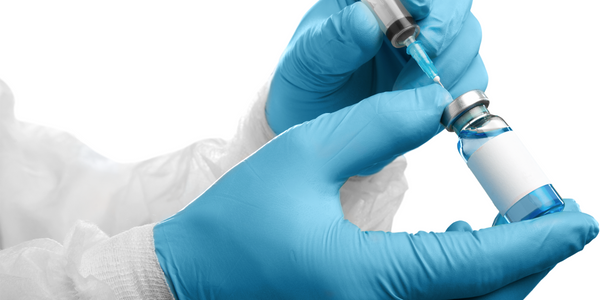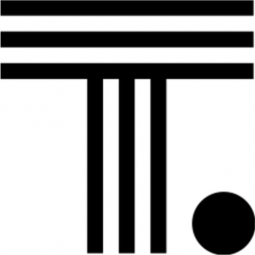Customer Company Size
Large Corporate
Region
- America
Country
- United States
Product
- ThoughtSpot
Tech Stack
- SQL
Implementation Scale
- Enterprise-wide Deployment
Impact Metrics
- Productivity Improvements
- Innovation Output
Technology Category
- Analytics & Modeling - Real Time Analytics
- Platform as a Service (PaaS) - Data Management Platforms
Applicable Industries
- Pharmaceuticals
Applicable Functions
- Product Research & Development
Services
- Data Science Services
- System Integration
About The Customer
The customer is a leading pharmaceutical company with a large team of 1000 scientists and researchers. They are involved in the discovery and development of new drugs, a process that is crucial for bringing life-saving medicines to market. The company deals with multiple data types and sources, including biobank data, omics data, and clinical trial data, which are essential for their research and development efforts. The company is focused on accelerating the drug discovery process to meet the growing demands of the healthcare market, which is undergoing significant changes due to increased customer expectations, decreasing insurance coverage, and heightened regulations. By leveraging new technologies and data, the company aims to stay ahead in the competitive pharmaceutical industry.
The Challenge
The pharmaceutical industry is facing significant challenges due to increased customer expectations, decreasing insurance coverage, and heightened regulations. These factors are creating obstacles for companies trying to bring successful products to market. Additionally, the explosion of data generated by new technologies presents both opportunities and challenges. In the drug discovery and development phase, which can take years, scientists need timely access to comprehensive information to determine the efficacy of a drug and decide whether it should proceed to production. However, accessing the right information was a manual and time-consuming process, as data was stored in siloed areas and could only be accessed via SQL. This led to the BI team being overwhelmed with requests, sometimes taking up to three months to fulfill.
The Solution
To address the challenges of accessing and analyzing data, the pharmaceutical company implemented ThoughtSpot as a centralized hub for their scientists. ThoughtSpot was chosen for its ease of integration with various data sources and its user-friendly interface, allowing scientists to search and analyze data quickly. The company connected data from their biobank, omics data, and clinical trial data to ThoughtSpot, enabling scientists to have visibility into all relevant data. This integration allowed scientists to perform instant searches across drug data, analyze patient cohorts, identify side effects, and check on inventory. The solution significantly reduced the time required to generate reports, which previously took months, to just minutes. This rapid access to actionable information enabled the company to accelerate the trial process, reduce costs, and speed up the time to market for new drugs.
Operational Impact
Quantitative Benefit

Case Study missing?
Start adding your own!
Register with your work email and create a new case study profile for your business.
Related Case Studies.

Case Study
Case Study: Pfizer
Pfizer’s high-performance computing software and systems for worldwide research and development support large-scale data analysis, research projects, clinical analytics, and modeling. Pfizer’s computing services are used across the spectrum of research and development efforts, from the deep biological understanding of disease to the design of safe, efficacious therapeutic agents.

Case Study
Fusion Middleware Integration on Cloud for Pharma Major
Customer wanted a real-time, seamless, cloud based integration between the existing on premise and cloud based application using SOA technology on Oracle Fusion Middleware Platform, a Contingent Worker Solution to collect, track, manage and report information for on-boarding, maintenance and off-boarding of contingent workers using a streamlined and Integrated business process, and streamlining of integration to the back-end systems and multiple SaaS applications.

Case Study
Process Control System Support
In many automated production facilities, changes are made to SIMATIC PCS 7 projects on a daily basis, with individual processes often optimised by multiple workers due to shift changes. Documentation is key here, as this keeps workers informed about why a change was made. Furthermore, SIMATIC PCS 7 installations are generally used in locations where documentation is required for audits and certification. The ability to track changes between two software projects is not only an invaluable aid during shift changes, but also when searching for errors or optimising a PCS 7 installation. Every change made to the system is labour-intensive and time-consuming. Moreover, there is also the risk that errors may occur. If a change is saved in the project, then the old version is lost unless a backup copy was created in advance. If no backup was created, it will no longer be possible to return to the previous state if and when programming errors occur. Each backup denotes a version used by the SIMATIC PCS 7 system to operate an installation. To correctly interpret a version, information is required on WHO changed WHAT, WHERE, WHEN and WHY: - Who created the version/who is responsible for the version? - Who released the version? - What was changed in the version i.e. in which block or module of the SIMATIC PCS 7 installation were the changes made? - When was the version created? Is this the latest version or is there a more recent version? - Why were the changes made to the version? If they are part of a regular maintenance cycle, then is the aim to fix an error or to improve production processes? - Is this particular version also the version currently being used in production? The fact that SIMATIC PCS 7 projects use extremely large quantities of data complicates the situation even further, and it can take a long time to load and save information as a result. Without a sustainable strategy for operating a SIMATIC PCS 7 installation, searching for the right software version can become extremely time-consuming and the installation may run inefficiently as a result.

Case Study
ELI LILLY ADOPTS MICROMEDIA’S ALERT NOTIFICATION SYSTEM
Pharmaceutical production is subject to a strict set of enforced rules that must be adhered to and compliance to these standards is critically necessary. Due to the efforts of WIN 911’s strategic partner Micromedia, Lilly was able to adopt an alarm notification infrastructure that integrated smoothly with their existing workflows and emergency hardware and protocols. These raw energy sources enable the industrial process to function: electricity, WIN-911 Software | 4020 South Industrial Drive, Suite 120 | Austin, TX 78744 USA industrial steam, iced water, air mixtures of varying quality. Refrigeration towers, boilers and wastewater are monitored by ALERT. Eli Lilly identified 15000 potential variables, but limitations compelled them to chisel the variable list down to 300. This allowed all major alarms to be covered including pressure, discharge, quantity of waste water discharged,temperature, carbon dioxide content, oxygen & sulphur content, and the water’s pH.









